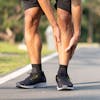Wellness Resources
An estimated one in four adults over the age of 40 takes a statin drug to lower cholesterol. Nearly 30 percent of those who take statin medications experience side effects. Muscle aches, fatigue, and weakness are the most common musculoskeletal complaints caused by statin drug use. Muscle distress reflects mitochondrial stress coupled with impaired nutrients function from statin metabolism. Protection of mitochondria structure and function with nutrition can assist your body in management of statin induced toxic stress.
Prevalent Use and Push for All Ages
Statin drugs approved in the United States include atorvastatin (Lipitor), fluvastatin (Lescol), lovastatin (Mevacor, Altocor) pravastatin (Pravachol), rosuvastatin (Crestor), simvastatin (Zocor), and pitavastatin (Livalo). They are among the most widely prescribed drugs in the world. CDC statistics show nearly 50 percent of adults 75 and older and almost 20 percent of adults age 40-59 use statin medications. Mainstream medicine wants even more people, including children, to take them, but many stop because of the drug side effects.
Musculoskeletal Concerns
The most common symptoms related to statin drug use are muscle pain and/or weakness. There may also be muscle tenderness, cramping, fatigue, and tendonitis especially in the shoulder, or Achilles tendon, and may lead to trigger finger. Side effects may progress to myostitis or mild inflammation of the muscles, elevated levels of creatine kinase (CPK) or rhabdomyolysis, which is severe muscle inflammation and damage. These symptoms may occur immediately after starting the drug, or weeks or months later. Children who are put statins also experience muscle aches and pains, headaches, and digestive complaints.
Statin drugs can also cause numerous other side effects. These include memory loss, mental confusion, neuropathy, high blood pressure, liver or kidney injury, fatigue, diarrhea, constipation, new onset diabetes, and exercise intolerance. Other statin side effects may include headache, indigestion, hair loss and erectile dysfunction. Musculoskeletal pain and weakness are the most prevalent side effect from statin use and the focus of this article.
Risk Factors
Individuals with a family history of heart disease, or had high blood pressure, obesity, history of smoking or a family history of heart disease compared to those without those same factors had higher risk of statin induced muscle stress compared to those without those same factors. In addition, those who use rosuvastatin or simvastatin experience more muscle symptoms compared to atorvastatin use.
Additional risk factors linked with statin-induced muscle symptoms include higher dosage levels, advanced age, Asian, Black African, and Caribbean ethnicity, alcohol use, low body mass, and untreated hypothyroidism.
Starting a new exercise program can trigger statin drug muscle symptoms. In addition, marathon runners, or those who engage in significant physical activity or exercise regimes are shown to experience higher levels of muscle injury with statins compared to those not taking statins. Statin use can also worsen symptoms of other underlying neuromuscular disorders like myasthenia gravis or muscular dystrophy.
Statins Use Can Cause Autoimmune Myopathy
In the last few years, a new autoimmune disorder called statin-induced necrotizing autoimmune myopathy has been identified as the result of statin drugs adversely affecting muscles. In this situation, patients experienced long-term muscle weakness that continued oncontinued long-after the drugs were stopped. Imaging studies and muscle biopsies show extensive inflammation, swelling and serious muscle tissue breakdown.
Statins Combined with Other Drugs
Other drugs combined with statins can also trigger statin-induced muscle symptoms. These include corticosteroids and drugs that affect statin drug detoxification. These includelike CYP3A inhibitors, i.e. amiodarone, ciclosporin, clarithromycin, erythromycin, protease inhibitors (e.g., indinavir, ritonavir), CYP2C9 inhibitors e.g., fluconazole and OATP1B1 inhibitioninhibitors, —e.g., gemfibrozil, ciclosporin.
Mitochondrial Distress
Mitochondrial dysfunction and impairment caused by statin medications is a major reason for the muscle symptoms. Scientists have identified several points of mitochondrial dysfunction related connected with to statin metabolism that relates to the musculoskeletal symptoms. Statins can inhibit mitochondrial biogenesis, or the birth of new mitochondria. Statins impair electron transport chain activity, which is at the core of energy production, and induce ubiquinone deficiency (coenzyme Q10), amongst other findings.
As impaired mitochondrial function continues from statins, reduced ATP/energy production occurs with increased levels of the highly toxic free radical ROS (reactive oxygen species). As degradation continues, AMPK activation struggles ultimately leading to skeletal muscle protein breakdown and cell death with increasing weakness, pain, and fatigue. AMPK is a master enzyme switch that regulates cellular energy levels.
Coenzyme Q10 and Other Supportive Nutrients
Several nutrients has have been found helpful to protect against free radicals and metabolic stress from statins, as well as to support mitochondrial function. Scientists have focused on coenzyme Q10, carnitine, vitamins D and E, creatine and curcumin.
Coenzyme Q10
Mitochondria use coenzyme Q10 to move electrons back and forth on their membranes. This process is necessary for energy production, especially in muscles and other high energy tissues like the brain, heart, kidneys, liver, and immune system. Coenzyme Q10 is also used to protect mitochondria from free radicals like ROS.
Mitochondria are at the core of your body’s energy production and several other thingskey functions. You can learn more about their vast importance in the articles below.
Statin drugs, especially simvastatin, inhibits mitochondrial activity and reduces coenzyme Q10 levels. Double-blind randomized controlled clinical trials showed muscle protection and improved function with coenzyme Q10. It compared statin users that received a placebo treatment and Q10. The best support occurred with liquid/soft-gel forms at a dosage of at least 100-200 mg per day. Higher doses up to 600-800 or more may be helpful for intensive support.
Accessory Nutrients to Assist Coenzyme Q10
Additional nutritional support may be combined with coenzyme Q10 to enhance muscle protection and mitochondrial energetics. Animal studies show an enhanced benefit for mitochondrial protection when coenzyme Q10 was combined with vitamin E and L-carnitine.
In addition, Kreb’s cycle nutrients like succinate are used by mitochondria to activate coenzyme Q 10., butTheir activity can also be impaired with statin use. Succinate aids the electron transport chain activity, which is essential for energy production. We use Kreb’s cycle nutrients in Daily Energy Multiple Vitamin and Activator Plus.
L-carnitine, which is derived from the amino acid l-lysine, also helps muscles and mitochondria. It provides antioxidant support and is used by mitochondria to burn fat to make energy and support muscle activity. Animal studies show that l-carnitine supports improves muscle and mitochondrial function with statin use.
High fat, low carb diets, high protein diets, pregnancy, and some genetic disorders can increase carnitine excretion out of your body, which may increase your dietary need. The highest food sources of carnitine are from animal proteins, especially red meats like beef, with lesser amounts found in pork, dairy, poultry and plant-based diets.
Vitamin D
Your muscles have vitamin D receptors. Insufficient vitamin D intake have been found to significantly contribute to statin-induced muscle symptoms. Recent findings show ed that individuals with vitamin D levels less than 30 nmol/L had a strong likelihood for statin-induced muscle problems.
Animal studies demonstrate that vitamin D intake aids in removal of lactic acid and supports muscle metabolism impaired by statin metabolism. Microscopic evaluation showed vitamin D also supported the shape and function of mitochondria and reduced oxidative stress.
Creatine and Curcumin
In addition to the more well-known coenzyme Q10 and vitamin D support for statin-drug stress, creatine and curcumin may also be considered as part of team of nutrients to support muscle function and health. Creatine is vital for normal muscle function and is needed to build muscles. Creatine is obtained from your diet with substantial amounts found in red meat, fish, and poultry. Your liver, kidneys, and pancreas can also make it from the amino acids l-arginine, glycine, and l-methionine. Plant-based diets contain limited amounts of creatine.
Creatine production can be blocked by statin medications, especially atorvastatin. If your diet contains limited creatine, your muscle stores may be inadequate to manage the impairment caused by the statins, which resulting results in a decline in muscle strength and energy.
When your body processes creatine, it is broken down into creatinine. Basic blood chemistry panels measure the breakdown product creatinine, but do not measure creatine levels in your body.
Curcumin from the spice turmeric offers another interesting angle of support in protecting muscles from statins. As an antioxidant, curcumin aids in muscle fiber repair and rebuilding. It helps attenuate signals that contribute to muscle soreness and support mitochondrial activity. In addition, curcumin aids as anacts as an antioxidant for cardiovascular health and cholesterol management.
The push for statins use is wide-spreadwidespread in medicine. If you are on the a statin medication, make sure to protect your muscles and mitochondria from statin drug-stress. Muscle strength and fitness and mitochondrial energetics are quintessential for aging well.










